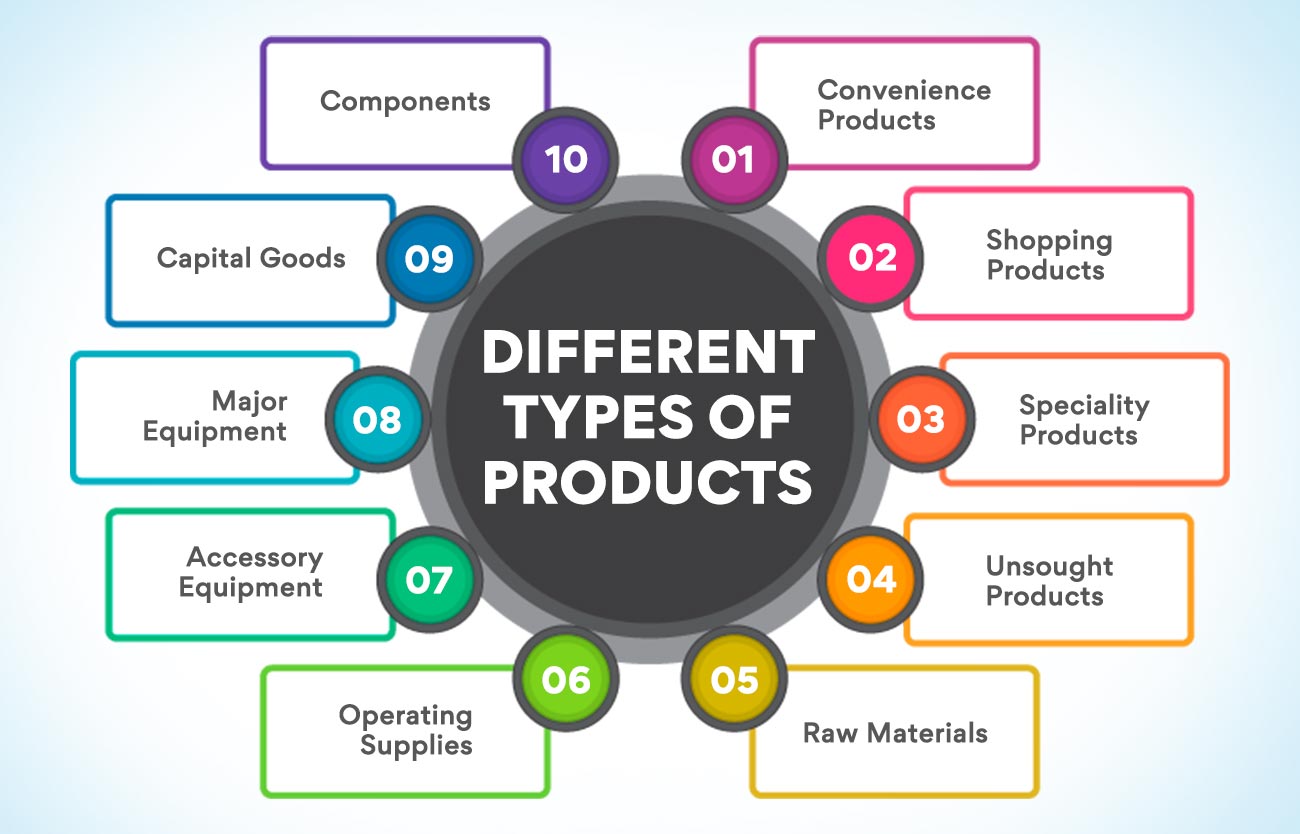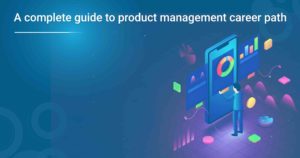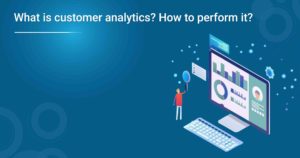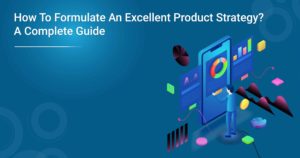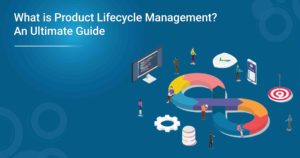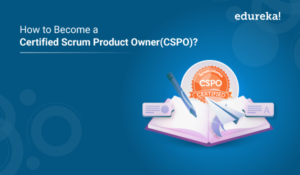Almost all of us talk about products a million times in our lifetime. Those in marketing probably use the term more often than anyone else. Company leadership depend on them to achieve their financial goals. Consumers use them to satisfy their various needs. Producers are constantly trying to improve them to enhance customers’ experiences. They are the ones that give value to money. But it is needed for an aspiring product manager to know about them superficially. They must know what a product is and its importance in their professional life.
What Is A Product?
Looking for a simple definition of a product can be unwise. The item is defined in various ways depending on where it is used. A product is anything that is produced. It is the result of a mathematical function. An idea is also the product of the thought process of someone. But what we are interested in here is to know what it means concerning businesses. Products are items that are sold to consumers to satisfy their needs. They can be physical, virtual or hybrid.
A product must provide value to customers. They must be able to benefit from it. Users must get quality service from the product. All products are made at a cost, and companies recover this from the price charged to the consumer. These items provide profit for companies and livelihood for a lot of people. While in the earlier days, people exchanged them for other things, today, almost all products are sold for money. Some of them are sold to consumers; others to companies that use them to make other products.
The study of products is a vast subject. One can learn a lot about how they are produced and marketed at the Advanced Executive Certificate Course in Product Management. Those interested in becoming proficient in this field may visit our website and learn more about the course.
Different Types Of Products
While there are millions of products in the world, they can be easily classified into ten categories. The first four are related to consumer items, while the others are industrial products. The classification is done based on the target buyer, buyer behaviour and the purpose of an item. It is necessary for anyone studying a product to understand what category it belongs to.
- Convenience Products
They are those items that people frequently purchase as and when they get exhausted. Consumers don’t think much when they buy these products. People purchase these items more often and are usually inexpensive, essential and accessible. Buyers generally don’t change the brand they buy, and not much comparison is done with other similar products available in the market. Introducing such a product to a customer is difficult, and there must be something special for the customer to try. Consumers may only purchase a new brand if their regular one is unavailable.
One of the ways to market such a product is to create compelling advertisements without much information. Another way to lure customers into buying them is to place the new brand near the checkout line in a supermarket. People don’t view all convenience products in the same way. There may be some items that buyers will switch brands, while in the case of others, people will prefer to stick to their regular items. To understand this in a better way, these goods may be further classified into three categories.
Staples – These are the items that people buy most often. Buyers usually stick to the same brands because it saves a lot of time.
Impulse Buys – They don’t appear on the shopping list. Customers see these at the shop and decide to buy them due to a sudden desire.
Emergency Purchases – These items also don’t appear on the shopping list. But people know their need for the items before they see them. They differ from impulse buys in that these goods are an answer to a problem rather than a craving.
Also Read: How To Become A Better Product Manager: Top 10 Tips
- Shopping Products
People distinguish between buying their everyday needs like groceries and “shopping”. The term usually refers to buying things like clothing, devices, furniture, etc. Expensive products like automobiles and property are also included in this category. People make personal choices when buying these items. Moreover, such a product is not purchased very often, so people spend a lot of time looking at options and comparing them. Various factors like quality, features, price, style and suitability influence the purchase.
As buyers spend much time researching the product, it allows companies to influence them. You can provide a lot of information to the customer through marketing. Companies can use advertisements to highlight the features that place their items above those of the competitors. Marketing teams can use various digital platforms for this purpose. Marketing content through websites and social media platforms is probably one of the best ways. Influencing existing customers to spread the benefits of the products is another effective way. This category of products can also be divided further into two.
Homogenous Products – These are items that customers perceive to be similar in all regards except for the price. Home appliances are typical examples of such products.
Heterogeneous Products – Consumers consider similar products in this category to be different from one another in quality or features. The difference may be real or perceived. Such products allow companies to highlight the quality of the goods instead of concentrating on price. Having several visions of these items helps to recommend suitable ones for different customers.
- Speciality Products
These are items that have unique characteristics or strong brand recognition. Speciality products are one-of-a-kind offerings, and customers will not usually prefer to change loyalties when it comes to these goods. People generally don’t change the brand of the car they buy. The same goes for gourmet groceries and electronic goods. The challenge for companies offering such a product is to keep offering better versions of the same product to make customers buy repeatedly. The company must also ensure that the products keep up with the latest trends and technologies.
- Unsought Products
A lot of products that people don’t generally seem to require fall under this category. Either the buyers have not felt the need to purchase them or are not aware of their existence. Thanks to good marketing, many of these have become commonly purchased items. Some of the products that fall into this category are house alarms, batteries and reference books. The microwave oven is one product in this category and is being purchased regularly. Marketers have been able to frame such products as a necessity for consumers. Aggressive marketing is necessary for these items.
From the consumer products, we now shift our focus to those belonging to the industrial goods category.
- Raw Materials
Many items like minerals, wood, and livestock fall under this category. As the name itself suggests, these are not end-products but go into the manufacture of finished goods. A product in this classification loses its unique characteristics when transformed into the final product. The producer sells these products to another industry that uses them to make goods for consumers. Most of the marketing for such products remains hidden from the public’s view. Common people don’t even see most of these products.
- Components
These products are also sold by the maker to another company that uses them to manufacture the finished goods. However, these items don’t get transformed into anything different. They remain the same but cannot by themselves provide any benefit to a consumer. They remain invisible to the person who purchases the finished goods. Rarely do companies like those making chipsets and microprocessors advertise their products. Their brand names also get mentioned on the final product. Most of the time, components are sold based on price and service, not by brand names.
- Capital Goods
These are products that find use in production processes. Heavy machinery, buildings, tools and office equipment fall under this category. A product in this classification is usually bought only once by the user. It means that the manufacturer must find a lot of customers to achieve its financial goals. This is where intermediaries come into action. These companies also help the manufacturer in providing installation and service for the goods.
- Major Equipment
These are the manufacturing equipment that companies use for making other goods. Machinery, vehicles, computers, etc. are examples of such goods. Even gadgets that help in processing or selling goods fall under this category.
- Accessory Equipment
These include tools that help in maintaining manufacturing machinery. These differ from major equipment because they don’t directly help manufacture or process an item. These goods usually have a shorter life span.
- Operating Supplies
A product under this category helps the company with its daily operations. Stationary and spare parts fall in this classification. A company buys these items frequently as they have a short lifespan.
One can surely learn more about the various types of products and their examples in the Advanced Executive Certificate Course in Product Management. Visit our website to know more about this program and how it can help you become an efficient product manager.
Now that we have seen different categories of products, shouldn’t we know how a product comes into the market? What triggers the creation of a new product? What stages does this development process have? You will find all the answers in this blog. Product managers are involved in all stages of the creation of new merchandise.
The New Product Development Process
All products are the results of ideas born in the minds of product managers. These ideas come from understanding customers’ problems and trying to find solutions for them. The journey from an idea to the entry of the product into the market can be divided into seven stages.
Idea Generation
At this stage, the emphasis is on generating many ideas that can help solve a customer problem. Here the focus is on solving the buyers’ problems and not developing a product. A company must find out and analyse the problems faced by people that it can solve. The team must list all such problems and prioritise them according to importance and urgency. Companies must come up with solutions for all problems and list them. These must be narrowed down to a few that have the potential for new product development.
Idea Screening
All the ideas are placed on the table, and the one with the maximum possibility of success is chosen. It is not just enough to choose the best idea. It must also be feasible. The firm must be able to produce the item with the existing resources. Even if new resources are required, it is necessary to weigh the cost with the benefits the product will offer to the company. The organisation must also look at competitors and see if the new merchandise can compete with existing products and attract customers.
Concept Development And Testing
Before building the new product, the firm should give priority to developing a detailed version of the idea and user stories. The team must calculate a pain vs gain ratio. It means they must compare the effort it takes to create the product with the benefits it will offer. The team must look at what the competitor’s product lacks and what improvements they can bring to the new product. They must prepare a value proposition chart and present it to selected customers. The PM must present a report of the feedback from customers to the stakeholders.
Market Strategy
Market strategy is all about finding the ideal way to reach out to the target audience. Here, the product, price, promotion and placement must be analysed and finalised. In the first step, the team must finalise the product based on the concept testing report. When it comes to pricing, the company must look at the cost of the product and the price at which similar goods are sold. The company must promote the unique features of the item and make sure the communication reaches the target audience. It must communicate how the product solves the major problems of the customer.
Product Development
The next step is to develop the product through various stages in its lifecycle. The team first builds a prototype and shares it with the stakeholders to show what it will look like. In the next step, a Minimum Viable Product with the necessary features is created. This will solve the customer’s problems but will not have the full set of features. Introducing such a version helps the company get feedback from actual users of the item. Companies should use the agile product development method as it allows for adding features step by step.
Deployment
Once the MVP is made, it is time to deploy the product in the live market. The quality assurance team ensures that the product works fine. New features are integrated with the existing ones as the acceptance from the customers improves. Tests are performed to make sure that the product functions as it is expected to. Developers test the performance of new features and their interaction with existing ones. Manual testing to evaluate the performance is done. Once the results are satisfactory, the product is ready for use by the customers.
Also Read: What Is Product Planning And How Is It Done?
Market Entry
It is time to commercialise the product. Care must be taken to talk about the concept rather than about the features of the item. Customers will want to know how it will make their life easier and not how the merchandise is unique. The company must sell the product’s unique selling proposition. The brand must also have a unique message. It must represent the brand and must attract customers. The marketing team must develop content that will make the customers want to try the product. The company must use all avenues to talk about the item to the target audience.
The journey of a product doesn’t stop with entering the market. It is after this that the product’s activities become known to the customers. It is not enough for companies to launch their products. They must follow through till an item has stopped giving any benefit to the customer or the firm. Once the product has been introduced in the market, it is time for product managers to look at ways to improve its performance by way of increased profits. This is where we go to the next stage in the journey of an item.
Market Growth
At this stage, the customers have already accepted the product and are regularly buying it. Its demand is increasing, and the company is earning more profits from it. At this time, the marketing strategy moves from gaining the users’ attention to establishing the brand presence. It is time to tell the customers why they must choose your product over others. Companies will add features to the product at this stage. They will also start offering better service to the customers by opening more support centres. There is an expansion in the distribution network to cover more people.
Maturity
This is the phase when sales begin to level off instead of showing rapid growth. It will become difficult to stay ahead in the market as the initial excitement over the product wears off. At this time, the marketing team must start focusing on highlighting the features that set the product apart from competitors. The phase of creating awareness is over. As the production costs come down and there are steady sales, there could be a tendency to reduce focus on the item. But this is the time to improve the product and maintain its edge over others.
Decline
This is the last stage of any product. All items in the market have a lifespan, and sales start dropping. It will be difficult to keep the product selling even with a lot of effort. There are various reasons for this. Customers may have lost interest and moved over to new items in the market. The product itself can become outdated. People will remember how VHS tapes were replaced by DVDs, and now even that is going out of the market. This is true for all the merchandise available in the market.
We have seen the different stages in the life cycle of a product. Anyone who wants to become a product manager must go deep into the subject, and the Advanced Executive Certificate Course in Product Management is the answer. Visit our website and learn what is being taught in the course and what benefits you will gain from attending it.
Why Do Some Products Fail?
It is not enough to know how a product is introduced in the market and how it grows. An aspiring PM must also know the reasons why some of the items fail to take off.

No Product-Market Fit – If a product must take off, it must offer the correct value to the market you focus on. Without this, the product is sure to fail.
Solution For The Wrong Problem – It is not enough that the product solves a problem. There must be enough people facing the specific problem in your market.
Wrong Timing – Many products have failed because the company took too long to perfect them. By the time other companies introduce a product, they take feedback from customers and improve it.
Ignoring Feedback – Customer feedback is very important. Ignoring it can lead the company to believe that its product is perfect and doesn’t need any change. This can lead to users rejecting it.
Too Slow To Change – It is not enough to get feedback from the users. Organisations must quickly make the necessary changes that will satisfy the customers. Delaying can lead to the product failing in the initial days.
Wrong Assumptions About Customers – Sometimes, assumptions about how a customer will use the product can be wrong. Regular feedback helps to change this.
Wrong Pricing – Pricing too high or too low can kill the product before it takes off. Customers don’t accept a product that is too expensive. Companies won’t benefit if the price is too low.
Inadequate Market Research – Not knowing the market well can lead to the introduction of the wrong product and subsequent failure.
Using Resources Wrongly – Using valuable resources like money, people and time for the wrong purpose can also result in a product failing to sell.
Competition – Competition can kill a product if the company is not quick to bring upgrades to make the product unique.
Much more can be said about how a product is born and how it succeeds in the market. The Advanced Executive Certificate Course in Product Management is the best place to learn more about it. Visit our website and find out how the course will help you become an efficient product manager.
Summing Up
The success of a product depends much on the efficiency of the product managers and their teams. PMs need to be constantly informed about what is happening in the market and how the item is performing. These professionals need a lot of skills to execute their jobs well, and attending a good course in the subject can equip them well.
More Information:
11 Crucial Product Management Metrics and KPIs
Product Management Learning- Key Areas






_1668670867.jpg)
